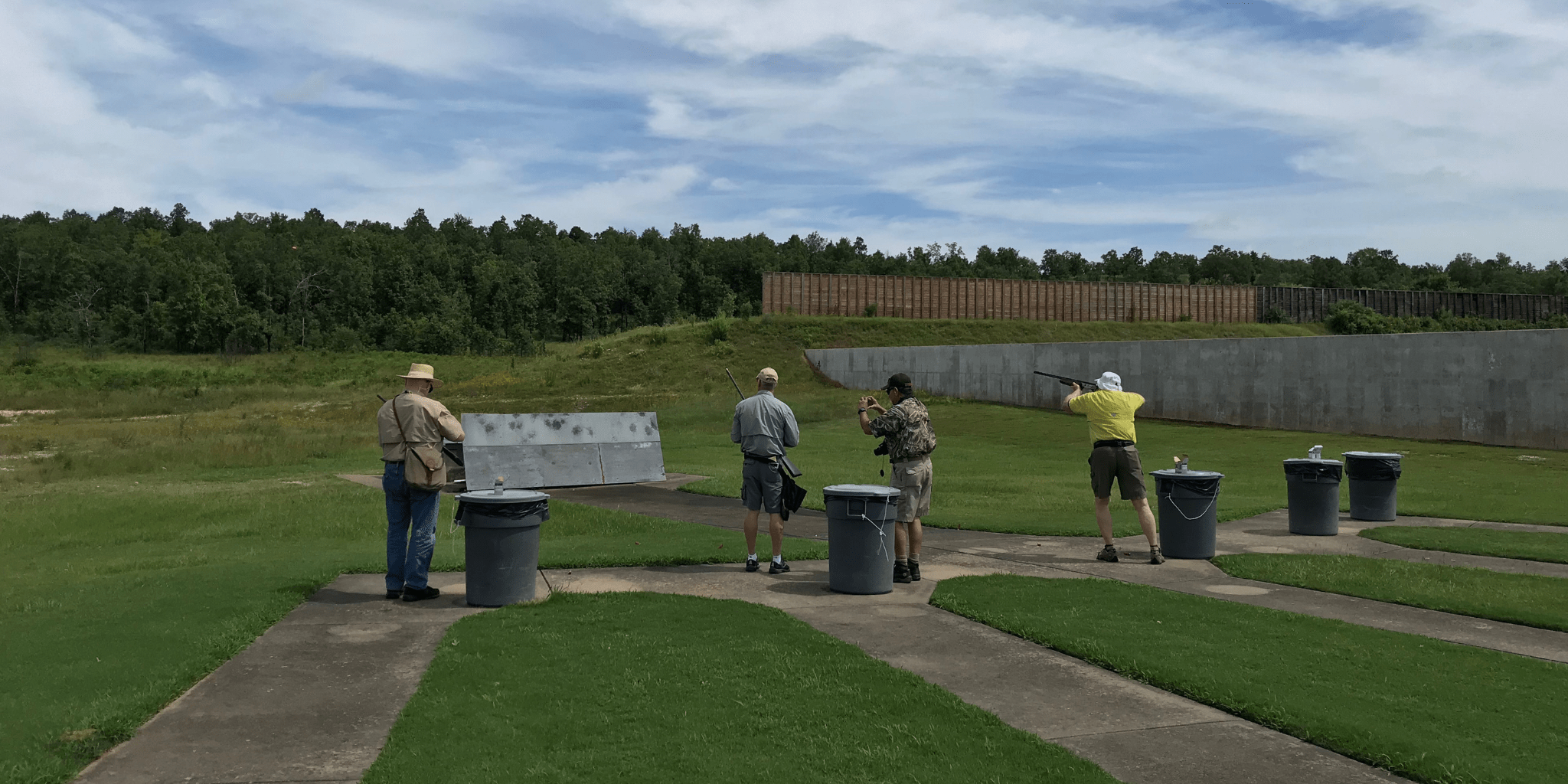We have much more to do and your continued support is needed now more than ever.
Arkansas Wildlife Federation and National Wildlife Federation Host Steel Shot Trap Station for Outdoor Writers Association of America Conference

“Pull!”
The orange disc arcs outward, the barrel swings, and the clay breaks.
The Arkansas Game and Fish Commission hosted the Outdoor Writers Association of America (OWAA) at the Dr. James E. Moore Jr. Camp Robinson Firing Range near Mayflower, Arkansas during OWAA’s annual conference in Little Rock in June. Trey Buckner, president of the Arkansas Wildlife Federation, joined Aaron Kindle and me from the National Wildlife Federation to outfit the trap station with shotguns and steel shot as part of the National Wildlife Federation’s Lead-Free Landscapes campaign, which encourages hunters, shooters, and anglers to voluntarily use non-lead ammunition and fishing tackle.
That was the last thing on the minds of the shooters, though, as experienced bird hunters broke clays consistently and some outdoor communicators were shotgunning for the first time with Trey’s helpful coaching. As a youth shooting sports coach, Aaron and I were grateful for his help. As were the novice shooters. Trepidation turned to smiles as Trey coached their insecurity about basic firearm operation into confidence that they might even break a clay.
The missed clays from inexperienced shooters and the broken clays from the experienced ones shared a common landing range in a marshy area in front of the trap station, and a pond in front of the adjacent skeet station. Before the bus showed up, Aaron and I noticed a couple small birds landing on the marsh vegetation. And that’s why we were shooting steel shot.
Lead shot and ammunition can poison birds that either ingest pellets, such as songbirds, or that scavenge gut piles and wounded but unrecovered game, like raptors. As a heavy metal poison, it gets ingested into the bloodstream and tissue of birds. As hunters and shooters, we can reduce the amount of lead we put into the environment and expose birds to by voluntarily using non-lead alternatives like steel shot and copper bullets.
Other birds, especially common loons, can be poisoned by lost lead fishing sinkers and weights. They’ll mistake sinkers for pebbles they grind in their gullets. And the loons you get in the winter in Arkansas might be some of the same ones I see in the summer up in northern Michigan while I’m fishing. These poisonings can be reduced by using nontoxic weights like tungsten, or tying flies with nontoxic wire or weighted eyes.
Two common barriers often cited for non-lead alternatives are cost and availability. As for cost, non-lead ammunition usually compares to mid-level or premium lead ammunition costs – and often performs similarly or better, and the slight increase in non-lead fishing weights is negligible compared to many of the other things we purchase for hunting and fishing. But the availability of non-lead options is a legitimate issue we need to solve.
For instance, we visited the Little Rock Bass Pro Shops during the OWAA conference the day before we went to the shooting range. I was still planning on fly fishing the Buffalo National River after the conference (before the trip was cancelled due to high flows), so I was going to buy a few Clouser minnows for smallmouth, except that they were tied with lead eyes. I asked the attendant in the White River Fly Shop if they had non-lead alternatives, and he told me I was the first one to even ask in the six years he’d worked there – and they didn’t. He was really helpful suggesting materials I could use to tie non-lead flies, but I’m not yet a fly tier. And I can hardly blame a store for not stocking a product no one has ever asked to buy. Likewise, I could only find copper bullets for my .30-06 before deer season, with no options for my 7mm-08, at the sporting goods store I frequent in northern Michigan. The gun counter attendant there looked perplexed that I would even ask for them.
If we want to increase availability, we need to increase demand for non-lead shot, which will lead to an increase in supply and eventually a decrease in cost. And most hunters and anglers I talk to see the value in switching once they learn of the lead impacts to non-target wildlife, but most weren’t aware beforehand. Additionally, the public perception of hunting will improve if we voluntarily decrease our lead usage and fewer poisoned birds make headlines, and that’s something our hunting community desperately needs. Our families will probably thank us for not serving them lead-tainted game meat, too.
There was no shortage of Winchester Super X Xpert steel shot at the range that day, though. The steel shot has a little higher velocity than comparable lead shot – 1325 feet per second compared to 1290, which helps on those far-flying trap clays. I shot through a whole box myself (just don’t ask how many I hit – I’m mostly a deer hunter!). And that’s the way it went that day: shooters you would expect to break clays broke clays, and shooters you would expect to miss them, missed them.
Not a single one of us, though, put an extra ounce of lead into the marsh where the clays landed beyond the trap station, and I didn’t observe a single shooter who left without a smile on their face.






















